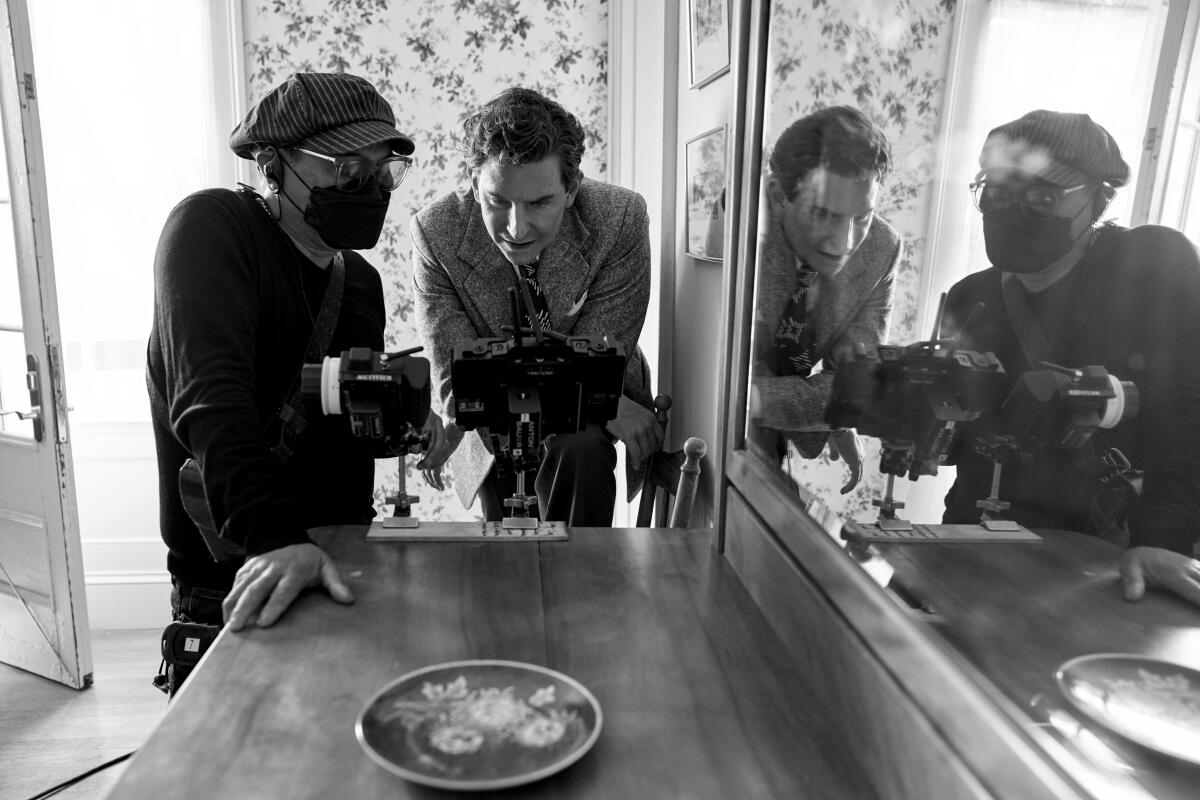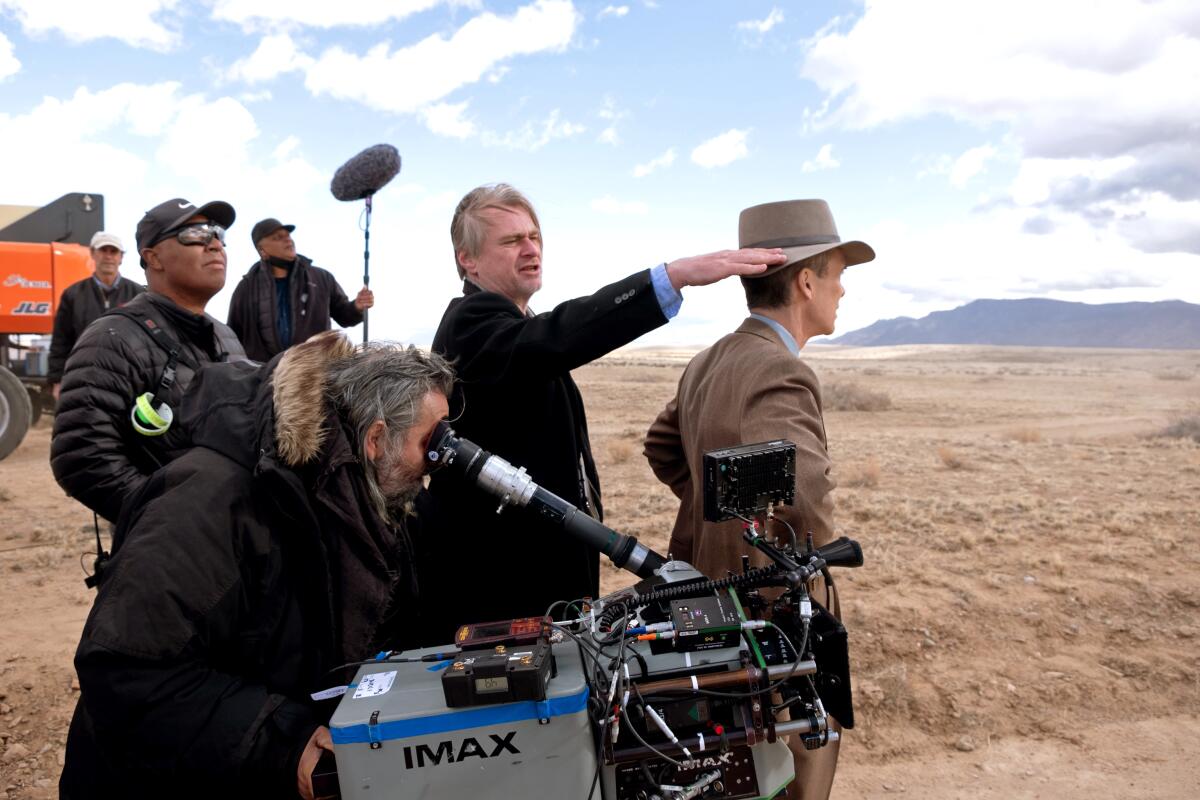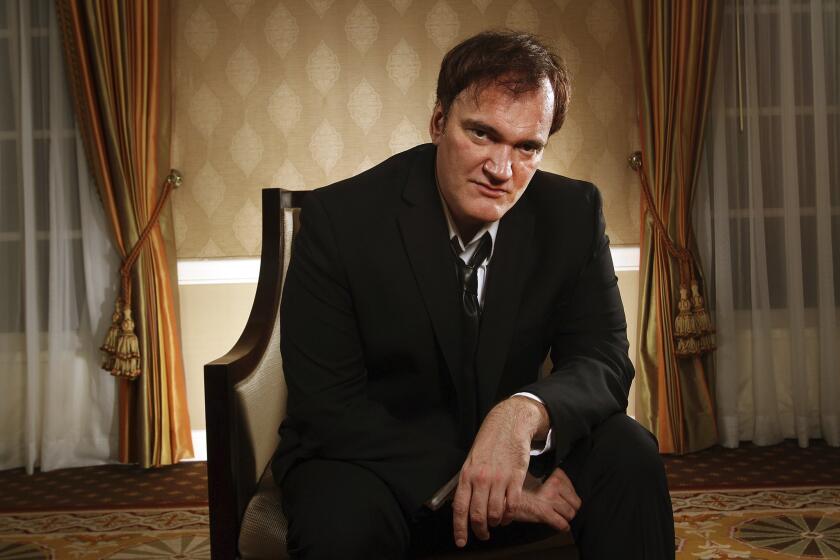Bradley Cooper is the latest director to ban chairs from his movie set. Other famed filmmakers ban phones

- Share via
Bradley Cooper insists on keeping energy up on set, which means there won’t be any sitting down.
The “Maestro” actor and filmmaker revealed his sans-chair policy to director Spike Lee, saying, “There’s no chairs on sets.
“I’ve always hated chairs, and I feel like your energy dips the minute you sit down in the chair,” Cooper told Lee in a conversation for Variety’s “Directors on Directors” series. “So [an] apple box is a very nice way to sit and everybody’s together. There’s no video village, I hate that.”

For readers wondering what an “apple box” is, they’re wooden boxes ubiquitous to film sets, used for propping up lighting and furniture — and sometimes actors who wish they had a chair. A “video village” is also a term widely used around the moviemaking circuit, referring to the director’s monitors, which allow the production team to view whatever is being captured on film in real time.
Although Cooper might seem like he’s taking his directorial role to new heights, he’s not alone among famed filmmakers who frown upon having chairs on set. Some even ban cellphones.
Bradley Cooper says his fascination with the subject of ‘Maestro,’ composer and conductor Leonard Bernstein, traces back to Bugs Bunny and Tom and Jerry.
In 2020, Anne Hathaway outed acclaimed “Oppenheimer” director Christopher Nolan for enforcing bans on set.
“Chris doesn’t allow chairs,” Hathaway told Hugh Jackman during a discussion for Variety’s “Actors on Actors” series. “I worked with him twice. He doesn’t allow chairs, and his reasoning is, if you have chairs, people will sit, and if they’re sitting, they’re not working.” Hathaway meant to applaud the director’s approach, adding, “I mean, he has these incredible movies in terms of scope and ambition and technical prowess and emotion. It always arrives at the end under schedule and under budget. ... I think he’s onto something with the chair thing.”

“There’s two directors I’ve worked with that don’t allow cellphones on set, Darren Aronofsky and Denis Villeneuve,” Jackman told Hathaway. “Both of them had exactly the same reason, which is exactly what you were saying: It’s about intentionality. Both of them talk about the space being sacred. If you’re on a cellphone, it dissipates that energy.”
Hathaway added that Nolan also doesn’t allow cellphones on set.
But Nolan’s team refuted the claims that he banned chairs shortly after Hathaway’s comments made headlines. “For the record, the only things banned from [Christopher Nolan’s] sets are cellphones (not always successfully) and smoking (very successfully),” a spokesperson for the director told IndieWire in 2020. “The chairs Anne was referring to are the directors chairs clustered around the video monitor, allocated on the basis of hierarchy not physical need. Chris chooses not to use his but has never banned chairs from the set. Cast and crew can sit wherever and whenever they need and frequently do.”
Diving into an explosive episode of 20th century history that launched the nuclear age, director Christopher Nolan unleashes the most ambitious film of his career.
Earlier this month, however, Robert Downey Jr. spoke with Mark Ruffalo about his experience on the set of Nolan’s “Oppenheimer” and seemed to confirm what Hathaway said. “We were doing screen tests on Imax, which is crazy,” Downey Jr. told Ruffalo per Variety. “You would go back and sit in your set chair — no, you wouldn’t, because there were no set chairs!”
In 2021 while promoting “Army of the Dead,” filmmaker Zack Snyder made his own case for standing room only on his sets. “There’s no sitting down,” he told the Playlist’s “Fourth Wall” podcast. “Like, I banned chairs from the set. But the nice thing is, it’s really intimate. I can just talk to the actors right there, I’m not back in a monitor across the room. It was definitely the most purely engaged I’ve been making a movie.”
Quentin Tarantino, the persnickety poet of ‘Django Unchained’
It’s unclear whether “Once Upon a Time in Hollywood” director Quentin Tarantino allows chairs on his sets, but it’s crystal clear that cellphones are not welcome.

In 2017, producer and assistant director William Paul Clark, who had worked with the “Pulp Fiction” director for decades, said that on Tarantino sets there’s a “checkpoint Charlie” where one crew member collects phones.
“There’s nothing more frustrating than taking all the time to get the camera ready and get the actors prepared and get them in there and start shooting the scene and something f— it up that’s not directly in front of the camera,” Clark told the Washington Post. “It’s accepted and it’s known that if a phone goes off on set, that’s your last day,” he said, noting that there had once been a manhunt after a cellphone’s ringtone disrupted filming on “Django Unchained.”
More to Read
The biggest entertainment stories
Get our big stories about Hollywood, film, television, music, arts, culture and more right in your inbox as soon as they publish.
You may occasionally receive promotional content from the Los Angeles Times.














